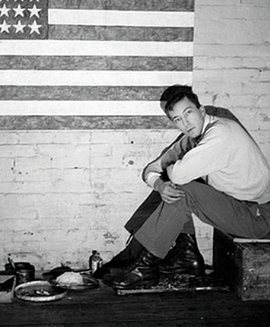Jasper Johns
American
b. May 15, 1930, Augusta, Georgia
Lives and works in New York, New York
Jasper Johns is one of most significant and influential American painters of the twentieth century. He ranks as one of the greatest printmakers of any era. In addition, he makes many drawings — unique works on paper, usually based on a painting he has previously painted. He has also created an unusual body of sculptural objects.
Johns' early mature work of the mid- to late 1950s helped to invent a new style that engendered a number of subsequent art movements, among them Pop, Minimal, and Conceptual art. That new style has usually been understood to be coolly antithetical to the expressionistic gestural abstraction of the previous generation. While Johns' painting often extended the allover compositional techniques of Abstract Expressionism, his use of these techniques stresses conscious control rather than spontaneity.
The American flag subject is typical of Johns' use of quotidian imagery in the mid- to late 1950s. As he explained, the imagery derives from things the mind already knows, utterly familiar icons such as flags, targets, stenciled numbers, ale cans, and, slightly later, maps of the U.S.
As Johns became well known he began choosing images that he identified in interviews as things he had seen — for example, a pattern of flagstones he glimpsed on a wall while driving. Still later, he sourced details from famous works of art. He has included in most of his art certain marks and shapes that clearly display their derivation from factual, unimagined things in the world, including handprints and footprints, casts of parts of the body, or even stamps made from objects found in his studio.
Jasper Johns artworks are represented in every major museum throughout the world. His works are also in most discerning private contemporary art collections.



